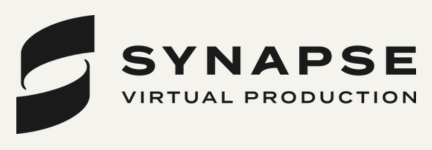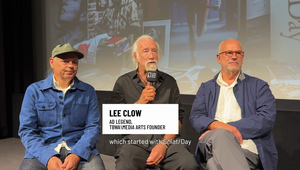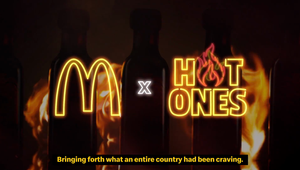
For TBWA’s Luke Eid, CES Showed “AI at Its Best”

At last month’s Consumer Electronics Show (CES), you might have been forgiven for thinking that the English alphabet only contained two letters: ‘A’, and ‘I’. The technology was everywhere, from the practical (Samsung’s AI-powered washing machines and vacuum cleaners) to the surprisingly endearing (a cuddly AI dog designed to provide support to elderly people).
But if some of the technology on show might have been a bit mind-boggling, it also provided us with that rarest of things: A first-hand look at what AI is capable of right now, free from the relentless cycle of hype. You can get a sense of that in the post-event report compiled by TBWA, which frames CES around one central question: “What’s next for brands?”. And for Luke Eid, TBWA Worldwide’s chief innovation officer, there was a lot to feel encouraged by.
“I think the best companies at CES weren’t just showcasing AI this year - they were demonstrating how it can empower rather than control”, he notes. “The real opportunity for brands isn’t in replacing human decision-making but in enhancing it – augmenting our choices, reducing complexity, and making interactions feel more intuitive, seamless, and even a little magical rather than just automated.”
By way of an example, he suggests Withings’ Omnia Smart Mirror – a device that leverages AI to provide real-time health insights. “It helps people make better wellness decisions without replacing human judgement”, says Luke. “This is AI at its best – acting as a trusted companion, anticipating needs, and offering intelligent assistance rather than dictating choices.”
And yet, the wider context here is a palpable sense of distrust towards AI from the general market. A report commissioned by consulting giant KPMG found that around two thirds of global consumers actively distrust the technology, for example. So is that making it harder for brands to leverage the technology’s full potential? Not necessarily, posits Luke.
“Oh heck yes, there’s absolutely a trust problem – we can probably thank Skynet and a century of sci-fi dystopias for that. But in reality, trust in AI won’t be solved by just making the tech better – it requires transparency, open-debate, and, frankly, more regulation so people know the right checks and balances are in place”, he begins. “Right now, too many AI systems feel like black boxes – decisions are being made without clear explanations. And while most people don’t need (or want) to understand the intricacies of AI and machine learning, they do need confidence in the motives behind the companies building it. Do they prioritise privacy, ethics, and safety? Or are they rushing irresponsibly? Now is not the time to “move fast and break things” – we’ve already seen where that leads us.”
So with that in mind, Luke offered LBB his thoughts on five stand-out products or ideas from this year’s CES.
LG’s "Affectionate Intelligence". Older readers may remember the hype around ‘the internet of things’ a few years ago. Now in 2025, LG’s AI agent ‘FURON’ is offering a more sophisticated take on connectivity within your own home. “It’s a glimpse of a more intuitive future”, says Luke, “with a focus on human-centric AI rather than pure automation and productivity”.
And on a similar note, the Connectivity Standards Alliance (CSA) is making it easier than ever for devices to connect with and speak to one another. “Matter’s Certification got easier”, says Luke, “making it easier for smart devices to gain approval. I know, not the flashiest thing – but it’s a big deal for driving adoption and creating a bigger ecosystem for brands to innovate within.”
The ‘omi’ AI companion is a wearable AI that listens, remembers, and acts as a coach, assistant, or note-taker. “It’s practical and honestly, the memory feature was the one I was most excited about”, explains Luke. “They did, however, make a bold claim that in the future the device will be able to read human thoughts – which I found a little less thrilling.”
Henkel’s SmartWash is aiming to ensure you never waste another drop of detergent. It’s a device that makes sure only the right amount is used on any given wash cycle. “Maybe it’s just me, but I’m sure I overpour every time”, admits Luke. “I love simple tech that makes analogue devices smarter – like the washing machine you’ve had for ten years.”
And on the geekier side of life, chip manufacturer Snapdragon teased Qualcomm’s AI Engine for Snapdragon 8 Elite. “It’s a major leap in on-device generative AI”, says Luke. “This enables multimodal interactions (voice, text, visual) without cloud dependency, meaning lower latency, better privacy, and more responsive AI. Apple pioneered this, but it’s great to see it becoming more widespread.”
On which note, that feeds into another key takeout from this year’s CES: The fight against walled gardens. The first few years of AI hype saw giants in the space compete (and invest vast sums of capital) to ensure that their AI model became the AI model to power all applications. But what we’ve seen since is just why the technology is built to be democratised.
“The real opportunity lies in interoperability, which has always been complex, even with industry standards like CSA. This is where AI is starting to bridge the gap – helping ecosystems talk to each other in ways that weren’t possible before”, explains Luke. “Rather than forcing users to manually integrate different systems, AI is acting as the connective tissue between platforms, creating more fluid, cross-ecosystem experiences. This is where AI Agents will play a huge role - navigating across different environments on behalf of users, ensuring they get the best experience without being locked in.”
And ultimately, the companies which really get on board with the potential of interoperability are the ones that will win out. “The brands that embrace this shift – leveraging AI to enable more open, user-centric ecosystems rather than rigidly controlling them – will be the ones that create the best customer experiences in the long run”, surmises Luke.
And in doing so, they may even bridge that aforementioned trust gap that’s troubling the majority of consumers, something that’s essential to achieving growth. “When brands integrate AI into their experiences, trust isn’t just in the hands of the AI developer, it’s transferred to the brand itself”, warns Luke. “People don’t differentiate between a third-party AI model and the brand using it; if something goes wrong, the brand takes the hit.”
That’s also why it’s so important that brands enter the AI space with their eyes wide open. “It means brands need to inherit the same responsibilities – ensuring AI is transparent, ethical, and gives people control. If AI is shaping recommendations, automating decisions, or personalising experiences, the brand needs to own that responsibility and make sure it enhances, rather than erodes, trust”, advises Luke.
“Shout out to all the legal teams in brands and on the agency side”, he concludes. “You probably have one of the hardest gigs in the business right now.”















